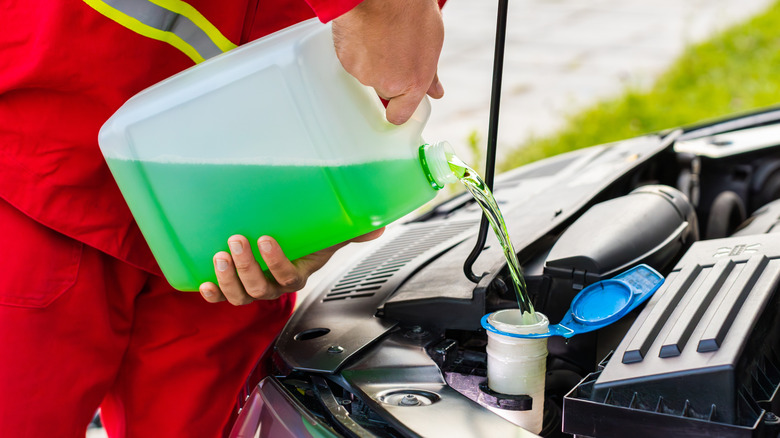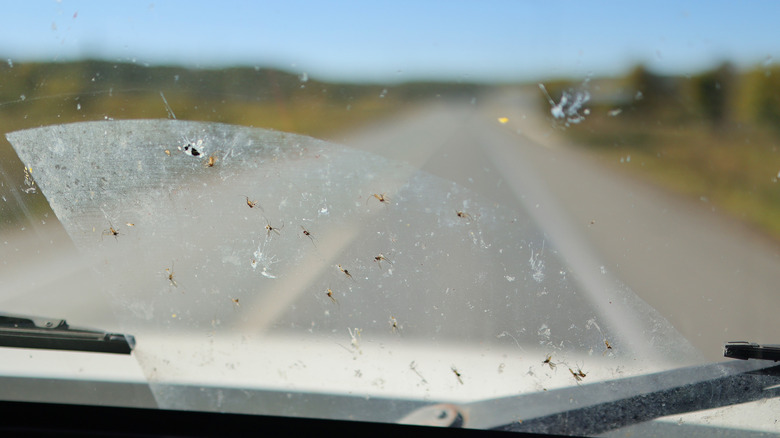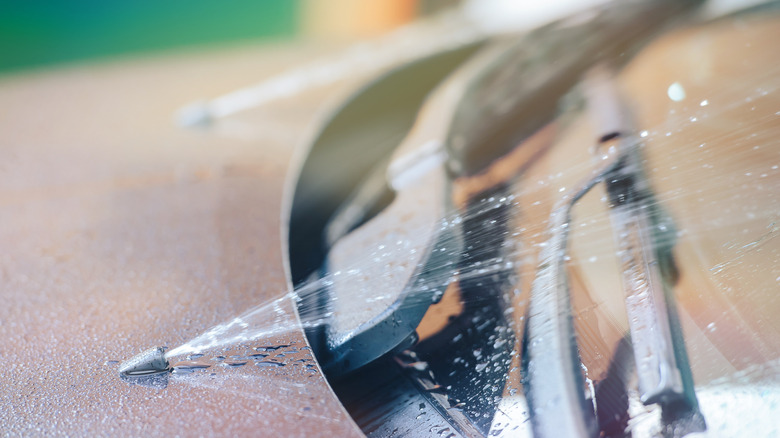What Is In Store Bought Windshield Wiper Fluid? (And Is It Safe?)
While windshield washer fluid isn't one of the automotive products likely to cause harm to your car, it's also not safe to drink, and should be stored away safely. Manufacturers often put colored dyes in their washer fluid to distinguish it from water, but those bright colors can cause children to mistake it for juice.
As always with automotive products, it is best to follow the manufacturer's instructions, particularly the safety warnings. Windshield washer fluid — or wiper fluid, as it is sometimes erroneously known contains a particularly toxic chemical as its main active ingredient: a form of alcohol widely used in industrial applications and fuels known as methanol.
Methanol — also known as methyl alcohol or wood spirit — is great for dissolving the organic chemicals of road grime: grease, oil, gasoline, even squashed bugs, but swallowing it can cause vomiting, difficulty breathing, nerve damage, blindness, and even death. As little as one-tenth of an ounce (2.5ml) can seriously poison a child, while one ounce (30ml) of pure methanol can prove lethal for an adult. Most off-the-shelf, ready-mixed windshield washer fluid contains up to 50% methanol, with the concentrated form holding around 80%. These mixtures may contain another toxic alcohol — ethylene glycol — which acts as an antifreeze.
You can mix your own, but do it right
Used properly, the combination of windshield washer fluid and wiper blades helps clean a dirty windscreen and improve visibility, particularly when driving into the sun, in dusty or dirty conditions, or when plagued by kamikaze insects. You'll want to top up your reservoir with store-bought fluid at regular intervals. The reservoir cap is found under the hood and usually marked with an icon of a windshield spray nozzle, but consult your owner's manual when in doubt.
You can top up with either a pre-mix or a concentrate, diluting the concentrate with distilled water according to the instructions. You can also make your own washer fluid using methanol, ethanol, or isopropyl alcohol, but always mix with distilled water. Never add tap water to washer fluid, as it can leave drying marks and residue spots that are difficult to remove. Bear in mind the windshield washer on your stalk control is designed to improve visibility while driving, and is not a substitute for the elbow grease needed to clean your windshield properly, which should be part of your vehicle's ongoing maintenance.
Keep that fluid flowing, out of harm's way
If your washer nozzles are not spraying fluid onto your windshield, it is most likely because the reservoir is empty and needs to be refilled. But it could also be down to blocked nozzles, a blocked or detached hose, or a malfunctioning pump. The windshield washer spray system is very simple: the reservoir bottle has a small electric pump at its base, which pumps washer fluid through a valve and tubes to the spray nozzles on the hood.
In the early days of passenger vehicles, things were even simpler. Windshield washers were activated like a water pistol, using the pressure of a push-button pump on the dash or a foot pump on the floor to spray jets of fluid onto the windshield. Ever the innovator, Volkswagen came up with its own ingenious and unusual method using air pressure from the spare tire to squirt washer fluid onto the windshield. Whichever way you get your debugging washer fluid onto your windshield, be sure to follow the manufacturer's recommendations and keep this potentially deadly liquid stored well away from curious young hands and eyes.


